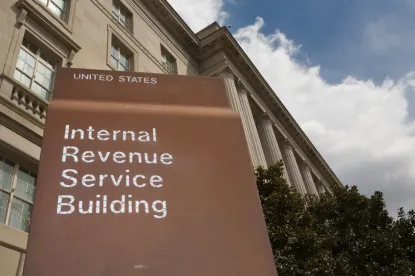On November 4, 2014, the Internal Revenue Service (“IRS”) announced that it intends to close a perceived “loophole” in health care reform. This so-called loophole allows employers to offer low cost health plans that don’t cover inpatient hospitalization services or physician services (or both). If that coverage were treated as “minimum value” coverage, then employers could avoid all pay-or-play penalties with low cost coverage and covered individuals would not be able to benefit from premium assistance or subsidies in the health insurance Marketplace.
In Notice 2014-69, the IRS announced that it will be closing this loophole so that these types of plans (called “Non-Hospital Plans” or “Non-Physician Services Plans”) would not be treated as “minimum value” coverage for health care reform purposes.
Here’s what that means.
Background
Under health care reform’s “pay-or-play” penalty scheme, applicable large employers (generally those with 50 or more full-time employees or employee equivalents) are subject to two penalties: the “A” penalty which applies if an employer makes no offer of “minimum essential coverage” to at least 95% (70% in 2015) of full-time employees; and the “B” penalty which applies if the employer offers minimum essential coverage that is unaffordable or does not provide “minimum value.”
Separately, if an employee is covered by affordable “minimum value” coverage, the employee is not eligible for a premium tax credit or subsidy to purchase insurance coverage in the health care reform Marketplace.
“Minimum value” coverage refers to coverage where the plan’s share of the total allowed costs of benefits provided under the plan is less than 60 percent of those costs. Generally, employers may determine whether a plan meets the minimum value requirement by applying a minimum value (MV) calculator provided by the Department of Health and Human Services or by fitting within a safe harbor defined by HHS.
The “Non-Hospital Plans” or “Non-Physician Services Plans” which are the subject of the latest IRS announcement were designed and promoted to provide “minimum value” coverage under the MV calculator without covering inpatient hospitalization and physician services.
Intended Approach
The bottom line is that the government agencies have all determined that Non-Hospital Plans and Non-Physician Services Plans do not provide minimum value for health care reform purposes. This is because the agencies believe that inpatient hospitalization services are “fundamental benefits that are nearly universally covered, and historically have been considered integral to coverage, under typical employer-sponsored group health plans.”
According to Notice 2014-69, this government position will be included in new regulations coming out in 2015. Once regulations are finalized, employers won’t be allowed to use the MV calculator (or any other permitted method) to demonstrate that a Non-Hospital/Non-Physician Services Plan provides minimum value.
What does this IRS Notice Mean?
Once this new rule is final, it means that Non-Hospital/Non-Physician Services Plans will not be treated as “minimum value” plans for premium subsidy purposes or pay-or-play purposes. Therefore, even if individuals have this coverage, they could go to the Marketplace and get a premium tax credit or subsidy. In turn, that could subject an employer to a “B” penalty (the $3,000 “unaffordable coverage” penalty), as the plan will not provide minimum value. Employers presumably could still avoid the “A” penalty for failing to offer coverage to at least 95% of full-time employees (70% in 2015).
What about “skinny” plans?
Although this IRS announcement is sometimes reported as targeting “skinny” plans, that is not entirely true. Non-Hospital/Non-Physician Services Plans are low cost plans, like the so-called “skinny” plans. However, unlike Non-Hospital/Non-Physician Services Plans, skinny plans do not purport to provide “minimum value” and thus are unaffected by the Notice. Skinny plans, along with Non-Hospital/Non-Physician Services Plans, may continue to be offered as a method for employers to avoid the mandate’s “A” penalty (i.e., by offering “minimum essential coverage”); however, neither skinny plans nor Non-Hospital/Non-Physician Services Plans will qualify for purposes of avoiding the “B” penalty. Employers considering offering Non-Hospital/Non-Physician Services Plans or skinny plans should consult with legal counsel prior to implementation.
Transition Relief
Because this is a new rule, the IRS is providing some transition relief. The new rule won’t apply to an employer’s plan for plan years beginning on or before March 1, 2015 if the relief applies. Transition relief generally applies if an employer has entered into a binding written commitment before November 4, 2014, to adopt a Non-Hospital Plan or Non-Physician Services Plan based on the employer’s reliance on results generated by the CMS minimum value calculator (available online). The relief also applies to an employer that has begun enrolling employees in a Non-Hospital/Non-Physician Services Plan prior to November 4, 2014.
Moreover, to qualify for transition relief, employers cannot explicitly state or imply that a Non-Hospital/Non-Physician Services Plan precludes an employee from obtaining a subsidy, and must timely correct any prior disclosures that made such a statement or implication.
Employers that are contemplating Non-Hospital Plans or Non-Physician Services Plans should carefully consider the guidance contained in the Notice before entering into a new contract to offer these types of plans.





 />i
/>i
